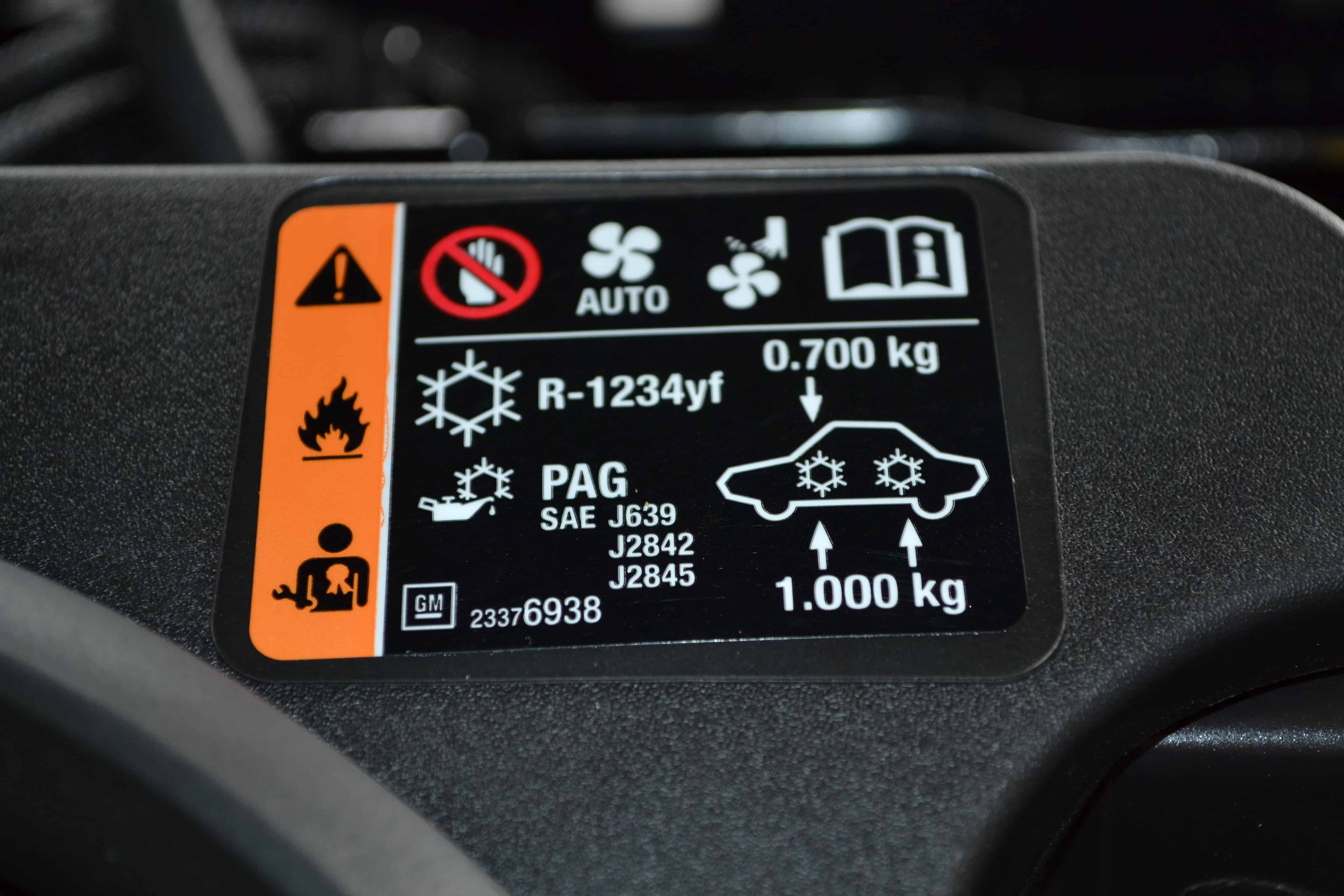Another A/C milestone
By Steve Schaeber, MACS Technical Editor
We’ve reached another milestone in the mobile A/C refrigerant timeline, and this time it’s a big one: January 1, 2017 was the drop-dead date set by the EU (European Union) for when vehicle manufacturers can no longer fill any new vehicle’s A/C system with fluorinated refrigerants (or F-Gases) that have a GWP rating of more than 150. This totally knocks out R-134a as a player (with its relatively high 1,430 GWP), pretty much leaving OEMs with a choice between R-152a, R-744 (what we call carbon dioxide when it’s used as a refrigerant) or R-1234yf, which is becoming the new world standard.
If possible, car makers around the world would still like to employ just one, universally accepted working fluid (the refrigerant), which is one reason why R-1234yf has so much support (that, along with its GWP of 1 and its similarities to R-134a among others). All OEMs will build yf systems to meet the current EU and upcoming US and other world regulations, but it’s not the only fluid in development right now.
Tata Motors in India is working on a “Secondary Loop” system with Mahle and the ISGD that uses R-152a, and we expect to learn more about that as 2017 progresses.
But probably the most well known is Daimler’s work on R-744 systems, which they have said will be available on certain vehicles for the 2017 model year. In fact, there were several meetings and discussions about the technology at the recent EAAC (European Automotive A/C Convention) in September, including a demonstration of R-744 R/R/R machine technology on an actual vehicle. More on this topic can be found in Paul Weissler’s article “CO2 A/C Development Comes Alive in Germany” in the September/October 2016 edition of ACtion Magazine.
In the meantime here in the US, we continue to see more and more vehicles on the street using R-1234yf refrigerant. In fact, MACS has been Following yf and the vehicle manufacturers to bring our members the most current information regarding which vehicles use the gas now, which ones are expected to use it in the coming months, and what new A/C technologies are being put in the newest cars and trucks.
Here’s the most current list we’ve put together so far, showing which manufacturers are using R-1234yf refrigerant in production vehicles right now. Keep in mind that some of these may not be US-spec, available only in Europe or other parts of the world.
- BMW i3 Electric, i8 Electric
- Cadillac CT6, XTS
- Chevrolet Malibu, Spark EV, Trax
- Chrysler 200, 300, Pacifica
- Citroën C4, Elysëe
- Dodge Challenger, Charger, Dart, Durango, Journey
- Fiat 500, 500L, 500X
- Ford Escape, Transit
- Great Wall Motor – Voleex C30
- Honda Civic, Fit EV, Pilot, Ridgeline
- Hyundai Santa Fe, i30
- Infinity Q50
- Jaguar F-Pace, F-Type, XE, XF, XJ, XJL
- Jeep Cherokee, Grand Cherokee, Renegade, Wrangler
- Kia Carenz, Cee’d2, Optima, Sorento
- Land Rover Discovery, LR4, Range Rover
- Lexus GS450h
- Mazda CX-5
- Mitsubishi Mirage
- Open Mokka
- Peugeot 301, 308
- Ram 1500
- Renault Zoe 3
- SAIC Motor – MG350 / Rover 350
- Subaru BRZ, Forrester, Impreza, XV
- Tesla Model S
- Toyota GT86, Prius Plus, Tacoma, Yaris HSD
MACS member Honeywell’s www.1234facts.com shows 10,830,113 cars worldwide use their Solstice yf brand refrigerant (as of 1/5/17). MACS verified these makes and models are using yf. (Courtesy of MACS Staff)
